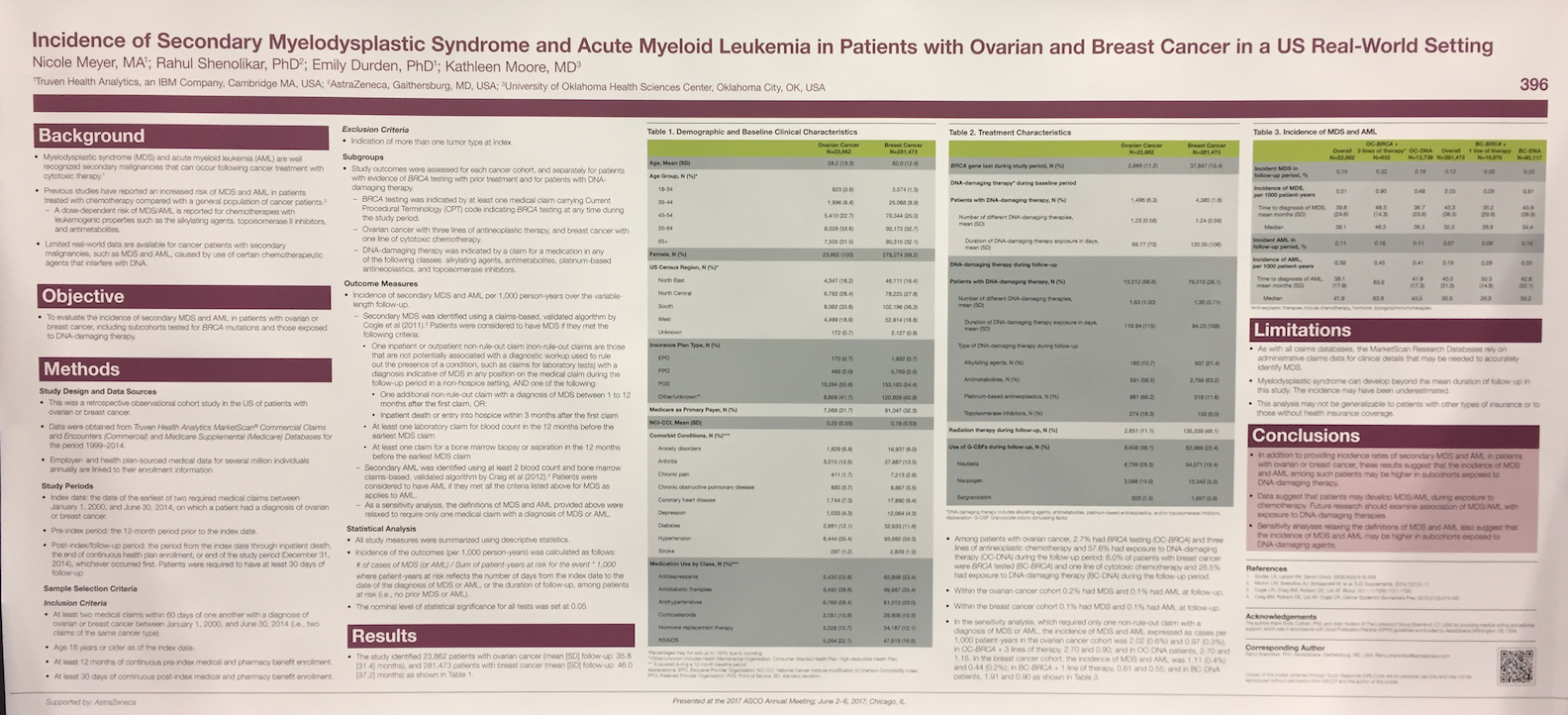SHAFAQNA-Cancer patients with secondary malignancies have limited access to data regarding the possibility of their myelodysplastic syndrome (MDS), acute myeloid leukemia (AML), or both, being caused by the usage of certain chemotherapeutic agents that could possibly interfere with DNA.
New data concludes, though, that the incidence of MDS and AML in ovarian and breast cancer patients was higher in patients exposed to DNA damaging agents.
The data, presented at the 2017 American Society of Clinical Oncology (ASCO 2017) annual meeting in Chicago by Nicole Fulcher, et al, were gathered with the intention to evaluate the incidence of secondary MDS or AML in patients with ovarian or breast cancer, including subcohorts tested for BRCA mutations and those exposed to DNA-damaging therapy.
AML is a cancer of the myeloid line of blood cells, categorized by the speedy growth of abnormal white blood cells built up in the bone marrow and interfering with the production of normal blood cells. MDS is a group of cancers that are the result of immature blood cells in the bone marrow not maturing, and thus, not becoming healthy blood cells. Many aspects of anti-cancer treatments, including pieces included in chemotherapy, have been known to include DNA damaging agents, which could be the cause of both or either secondary AML and/or MDS.
Results of the study, which evaluated 305,335 total patients (281,473 with breast cancer and 23,863 with ovarian cancer, respectively), suggest that patient subcohorts that were exposed to the DNA damaging agents did, in fact, have higher incidence of the two secondary malignancies.
Among ovarian cancer patients, 10.9% had breast cancer testing (OC-BRCA), and 56.6% had exposure to DNA damaging therapy (OC-DNA); 12.9% of breast cancer patients were breast cancer tested (BC-BRCA), and 28.1% had exposure to DNA damaging therapy (BC-DNA).
Plainly stated, the data suggests that patients may develop MDS and/or AML during exposure to chemotherapy.
Sensitivity analyses lessening the definitions of MDS and AML also propose that the occurrence of MDS and AML may be greater in subcohorts exposed to DNA-damaging agents. Future research should more accurately judge the association of MDS/AML with exposure to DNA-damaging therapies.

Reference
Fulcher N, et al. Incidence of secondary myelodysplastic syndrome and acute myeloid leukemia in patients with ovarian and breast cancer in real-world setting in the U.S. J Clin Oncol 35, 2017 (suppl; abstr 5574).


